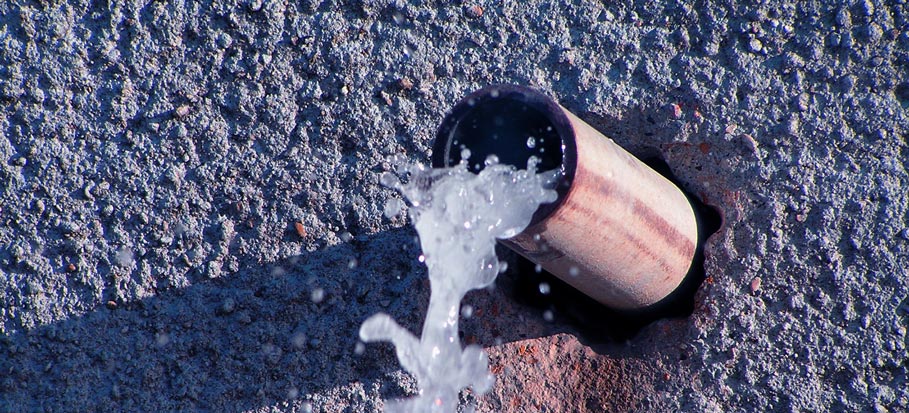Guide To Water Leak Discovery In Your Home
Guide To Water Leak Discovery In Your Home
Blog Article
We have encountered this article on Leaking water lines listed below on the web and thought it made sense to relate it with you on this page.

Early detection of leaking water lines can alleviate a potential disaster. Some tiny water leakages might not be noticeable.
1. Take A Look At the Water Meter
Every home has a water meter. Checking it is a surefire way that aids you uncover leaks. For starters, turn off all the water resources. Make sure nobody will certainly purge, utilize the faucet, shower, run the cleaning machine or dish washer. From there, most likely to the meter and watch if it will certainly change. Given that nobody is utilizing it, there must be no activities. If it relocates, that suggests a fast-moving leakage. If you find no changes, wait an hour or two and also check back once more. This means you may have a slow leakage that can also be underground.
2. Examine Water Intake
If you detect abrupt modifications, regardless of your consumption being the exact same, it indicates that you have leakages in your plumbing system. An abrupt spike in your expense suggests a fast-moving leakage.
A stable rise every month, even with the very same habits, reveals you have a slow-moving leak that's additionally gradually escalating. Call a plumber to completely check your building, particularly if you really feel a cozy area on your floor with piping below.
3. Do a Food Coloring Test
When it comes to water usage, 30% comes from commodes. If the shade in some way infiltrates your dish throughout that time without flushing, there's a leakage between the tank and bowl.
4. Asses Exterior Lines
Do not neglect to inspect your outside water lines too. Should water permeate out of the link, you have a loose rubber gasket. One tiny leakage can lose heaps of water as well as spike your water costs.
5. Evaluate as well as Evaluate the Situation
House owners ought to make it a habit to examine under the sink counters as well as even inside closets for any type of bad odor or mold development. These two warnings indicate a leakage so timely attention is needed. Doing routine examinations, even bi-annually, can conserve you from a major trouble.
Inspect for discolorations and damaging as the majority of pipelines as well as appliances have a life expectancy. If you suspect leaking water lines in your plumbing system, don't wait for it to escalate.
Early discovery of dripping water lines can alleviate a possible disaster. Some little water leaks might not be noticeable. Checking it is a surefire way that aids you find leakages. One little leakage can throw away bunches of water and surge your water costs.
If you think dripping water lines in your plumbing system, don't wait for it to rise.
How to Know If Your Home Has a Hidden Leak
Water Meter Reveals Inexplicable Water Usage
If you’d like to test whether or not there’s a leak somewhere in your home, you can do this using your water meter. Here is how to conduct the test:
Don’t use any water in your home for at least 30 minutes; this also means not turning on faucets or water-using appliances.
Go outside, and check your water meter for activity.
If your water meter shows that there was activity, even though no one was using any water, this proves that there is a leak in your home.Visible Mold or Mildew Growth
Leaks behind walls create moist, dark environments that allow mold and mildew to grow and thrive. Eventually, you might see mold growth forming on the wall closest to a hidden leak.
If mold is growing in an area that receives a high amount of moisture, such as a bathroom, it may simply be an indication that better ventilation is needed. However, if you see mold growth on a wall or the ceiling in an area where you would not expect, you probably have a hidden leak.
Musty, Mildew Odor
Sometimes you might not be able to see the mold or mildew that is growing as a result of a leak. However, the smell can give the problem away just as easily. If you catch a whiff of something musty, there’s a good chance that old water is collecting somewhere in your home that you can’t see.
Stained/Warped Walls, Ceilings, or Floors
When your home soaks up water, a variety of red flags can become visible, including ceiling stains, bubbling drywall, warped walls, and sagging floors. While these issues can be caused by excess humidity, they can also be signs that a pipe or plumbing connection has started leaking behind your walls.
Inexplicably High Water Bill
After a while, you get a general sense for what your water bill should be. If you own a pool or sprinkler system, your bill will tend to be higher during summer. However, if you receive a water bill that seems especially high, and you can’t figure out what caused it, then you may have a hidden leak somewhere that’s increasing your bill.
https://www.plumbingjoint.com/blog/2019/july/how-to-know-if-your-home-has-a-hidden-leak/

We had been guided to that report about Locating water leaks from a friend on a different web property. Are you aware of another individual who is fascinated about Locating water leaks? Take a moment to promote it. I truly appreciate reading our article about Locating water leaks.
Report this page